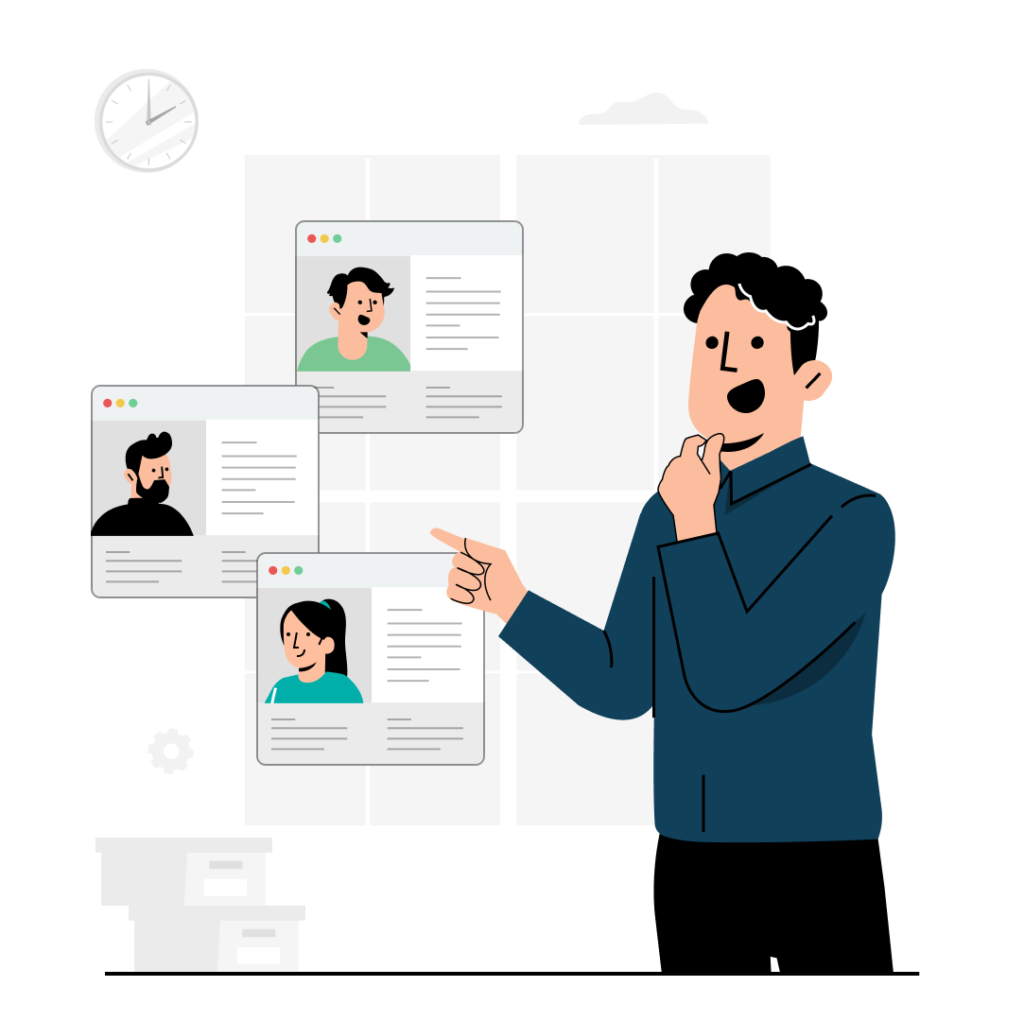You’ve probably encountered legacy code that made you wonder what the original developers were thinking. Maybe you’ve inherited a system built before you started coding, or stumbled across decades-old source code running critical infrastructure at Fortune 500 companies.
Here’s what most developers miss: those old codebases are archaeological sites containing architectural wisdom applicable to modern development. Systems built under severe constraints—64KB memory for Apollo, real-time 3D on 1993 hardware for DOOM—embody design decisions worth studying.
This guide examines what you can learn from systems that have survived decades of continuous operation, from Unix philosophy to constraint-driven design to strategic frameworks for technical debt.
What Is Code Archaeology and Why Does Learning From Old Code Matter?
Code archaeology is the systematic practice of exploring historical codebases to extract architectural knowledge and engineering practices that remain relevant decades later. Systems built under severe constraints often yielded optimal decisions. The archaeological mindset treats legacy systems as artefacts revealing design decisions through systematic methodology—site survey, excavation, analysis, and documentation phases. Understanding why 1970s patterns remain optimal informs better decisions about architecture, technical debt, and modernisation. This provides frameworks grounded in proven patterns rather than hype cycles.
The archaeological mindset differs from typical legacy modernisation. Rather than treating old code as debt to remediate, it’s a treasure trove to study. This approach enables extraction of timeless patterns transcending technology eras: modularity, composability, rigorous standards. Application to modern CTO challenges includes technical debt assessment, refactor versus rewrite decisions, and engineering practice adoption.
How to Read Legacy Code Like an Archaeologist details the complete methodology.
What Architectural Patterns From the 1970s Still Matter in Modern Development?
Unix philosophy principles—modularity, composability, standardised interfaces—directly inform modern microservices and cloud architecture. The “do one thing well” principle became containerisation; pipes became event-driven systems; text streams became JSON APIs. Mainframe transaction processing patterns influenced modern distributed systems through separation of concerns, immutability, and idempotent operations. These patterns remain optimal because they address fundamental complexity challenges, managing cognitive load and enabling testability. Understanding historical manifestations helps recognise when to apply proven patterns versus chase technology fads.
The direct lineage is clear: Unix pipes evolved into microservices, batch processing became ETL pipelines, transaction processing informed event sourcing. Pattern recognition across eras helps CTOs evaluate architectural proposals with historical context, distinguishing enduring principles from temporary trends.
Unix Philosophy and Timeless Software Architecture Patterns explores how 1960s-70s principles inform modern cloud architecture.
How Did Severe Constraints Produce Better Software Design Decisions?
Extreme limitations in memory, processing power, and tools forced optimal architectural decisions from first principles. DOOM’s real-time 3D on 1993 hardware demanded algorithmic excellence. VisiCalc’s spreadsheet architecture established patterns still used today. Constraints eliminate wasteful options and force thinking about essential versus accidental complexity. Three constraint categories shaped historical systems: memory limitations, processing power boundaries, and development process constraints. Modern applications voluntarily adopt constraint thinking through performance budgets and simplicity quotas.
The paradox: more resources don’t guarantee better outcomes. Modern development often produces over-engineered systems because unlimited resources enable wasteful choices. Studying constraint-driven design reveals when limitations produce technical debt versus when they produce excellence—a nuanced analysis critical for technical leadership decisions.
Constraint-Driven Software Design provides theoretical foundation. NASA Apollo and DOOM Architecture offers concrete examples.
What Can Modern Developers Learn From NASA Apollo’s Flight Software?
Apollo Guidance Computer demonstrates mission-critical practices applicable to high-reliability modern systems: formal verification, rigorous coding standards (precursor to Power of Ten Rules), priority-based scheduling, exhaustive testing. Key innovations included core rope memory for read-only program storage, interpretive language for memory efficiency, and priority interrupt scheduling. The lesson: apply high-stakes practices based on actual failure costs. Your shopping cart doesn’t need formal verification. Your medical device does. Avoid survivorship bias—Apollo’s approach limited flexibility and required expensive development.
Mission requirements drove architectural decisions: 64KB total memory, 2KB RAM, real-time constraints. Flight software standards included formal verification, extensive simulation, rigorous code review, and comprehensive documentation. Lessons for modern CTOs involve knowing when to apply aerospace-level rigour through risk-based practice adoption.
NASA Apollo and DOOM Architecture provides detailed case study. Engineering Practices from Mission-Critical Software covers selective adoption.
What Engineering Practices From High-Stakes Domains Apply to Commercial Development?
Aerospace, military, and financial domains developed practices where failure costs are severe: NASA’s Power of Ten Rules (restrict recursion, limit cyclomatic complexity below 10, verify all returns, check all memory allocations), formal code review processes, test-driven development, rigorous change control, comprehensive documentation. Commercial development can selectively adopt these based on risk profile—not everything needs aerospace-level rigour, but critical paths benefit from high-stakes standards. The key is matching practice intensity to actual failure cost rather than applying one-size-fits-all approaches.
Five transferable practice categories include coding standards, code review, testing strategies, documentation discipline, and change control. Formal code review differs from modern pull requests in ways that reveal what was gained and lost in evolution. TDD in legacy versus greenfield contexts requires different strategies.
Engineering Practices from Mission-Critical Software – Transferring High-Stakes Domain Standards to Commercial Development covers selective adoption frameworks based on risk.
How Should CTOs Assess and Prioritise Technical Debt in Inherited Legacy Systems?
Inheriting legacy systems requires systematic archaeological assessment: map the codebase, trace execution, extract patterns, quantify debt with metrics (SQALE rating, cyclomatic complexity, test coverage). Prioritise based on business impact, risk scoring, and strategic options (maintain, refactor, replatform, replace). Five-phase framework guides the process: Assess, Prioritise, Decide, Build business case, Execute. Apply archaeology techniques to map architecture, quantify debt, evaluate options, and balance reduction with features. Recognising technical debt as archaeology opportunity rather than burden enables extracting lessons from long-lived systems to inform what to preserve during modernisation.
The new CTO’s challenge involves inheriting systems without context while under pressure to deliver. Archaeological assessment methodology applies code archaeology techniques to debt analysis. Quantifying debt requires specific metrics with business impact translation and risk scoring frameworks. Strategic options analysis determines when to maintain, when to refactor incrementally, and when to replace.
Technical Debt Assessment and Modernisation Strategy provides the complete framework.
When Should You Refactor Legacy Code Versus Rewrite From Scratch?
Default to refactor and justify rewrite with strong evidence. Data shows 80 per cent or more of big-bang rewrites fail due to lost knowledge, underestimated complexity, and embedded business logic. Seven-criteria framework guides decisions: code quality, business logic complexity, technology obsolescence, team capability, timeline, risk tolerance, strategic value. Incremental refactoring using Strangler Fig delivers value continuously. APIfication wraps legacy with modern interfaces. Full rewrites are rarely justified. The rewrite temptation is seductive but dangerous, with case studies demonstrating failed big-bang approaches and opportunity costs measuring in millions.
Three execution strategies address different scenarios: incremental refactoring through Strangler Fig pattern for step-by-step replacement, APIfication and encapsulation to modernise interfaces while preserving proven business logic, and hybrid approaches with targeted rewrites preserving core. Rare cases where full rewrite is justified require exceptional decision-making frameworks.
Refactor vs Rewrite provides complete decision framework.
Is Specialising in Legacy Systems a Viable Career Path in 2025?
Legacy specialisation offers three career paths: maintenance specialist with salary range ninety to one hundred fifty thousand dollars, modernisation consultant earning one hundred twenty to two hundred thousand dollars or more as transition expert, or hybrid developer integrating legacy with modern systems. Demand remains strong as mainframes run critical infrastructure processing 87 per cent of credit card transactions at banks, governments, and Fortune 500 companies. COBOL expertise creates niche opportunities with less competition. Learning requires six to twelve months to proficiency. Specialisation makes sense if you value stability, deep expertise, and less competition over cutting-edge technology work.
Market reality contradicts the “legacy is dying” narrative—ongoing demand persists because of reliability requirements, migration risk, and embedded business logic complexity. Three career paths offer different growth trajectories and skill requirements. ROI analysis weighs time investment versus earning potential and job security. Learning roadmap covers COBOL, JCL, CICS/IMS/VSAM, and modernisation tools like GnuCOBOL.
Learning COBOL and Mainframe Systems in 2025 provides complete career analysis.
Resource Hub: Code Archaeology Library
Methodology and Foundations
How to Read Legacy Code Like an Archaeologist – Systematic Approaches to Understanding Old Systems: Start here when inheriting undocumented systems. Four-phase archaeological methodology (site survey, excavation, analysis, documentation), tools and techniques for understanding code without institutional knowledge, building archaeological expertise.
Unix Philosophy and Timeless Software Architecture Patterns That Transcend Technology Eras: Essential reading for understanding architectural fundamentals. Core Unix principles, pattern recognition across 50-plus years, modularity and composability from pipes to microservices, why certain designs remain optimal.
Constraint-Driven Design and Case Studies
Constraint-Driven Software Design – How Limitations Produce Superior Architecture and Robust Systems: Theoretical foundation for constraint-driven excellence. How severe limitations force better decisions, memory/processing/process constraints, modern application of constraint thinking, when constraints produce excellence versus technical debt.
NASA Apollo Guidance Computer and DOOM Engine Architecture – Case Studies in Constraint-Driven Excellence: Concrete technical examples of constraint-driven design. Deep technical dives into Apollo AGC and DOOM engine, architectural decisions under extreme constraints, lessons applicable to modern mission-critical software, avoiding survivorship bias.
Engineering Practices and Modernisation
Engineering Practices from Mission-Critical Software – Transferring High-Stakes Domain Standards to Commercial Development: Selective adoption of aerospace practices based on risk. NASA Power of Ten Rules, formal code review, TDD for legacy versus greenfield, when high-stakes practices apply versus when they’re overkill.
Refactor vs Rewrite – Legacy System Modernisation Decision Framework and Execution Strategies: Essential before committing to modernisation initiatives. Seven-criteria decision framework, why 80-plus per cent of rewrites fail, incremental refactoring (Strangler Fig), APIfication strategies, case studies of successes and failures.
Strategic Decision Support
Technical Debt Assessment and Modernisation Strategy – CTO Decision Framework for Legacy Systems: Executive framework for technical leadership decisions. Archaeological assessment of inherited systems, quantifying debt with metrics, strategic options analysis, building board-level business cases, balancing debt reduction with feature development.
Learning COBOL and Mainframe Systems in 2025 – Legacy Technology Career Paths and Opportunities: Career decision support for legacy specialisation. Market reality for legacy skills, three career paths with ROI analysis, learning roadmap, why mainframes persist, when specialisation makes sense.
FAQ
Why should I care about old software systems when technology has advanced so much?
Historical systems demonstrate architectural decisions made under constraints that forced optimal solutions. Modern development often produces over-engineered systems because unlimited resources enable wasteful choices. Studying Unix philosophy or mainframe transaction processing reveals timeless principles applicable to cloud-native and distributed systems architecture.
How can studying historical systems help me make better technical decisions?
Code archaeology provides decision-making frameworks grounded in proven patterns rather than fads. Understanding that Unix modularity survived 50-plus years while countless frameworks died helps assess longevity. Archaeological methodology enables systematic assessment without institutional knowledge. Historical perspective reduces susceptibility to “rewrite everything” impulses by demonstrating proven patterns.
What specific practices from mainframe development should I adopt for modern cloud applications?
Selective adoption based on risk: rigorous change control for production systems, comprehensive documentation for complex business logic, formal code review for critical paths, and idempotent operation design. Don’t adopt waterfall rigidity, centralised architecture, or slow deployment cycles. Extract practices that address your actual failure modes.
How do I convince my team that studying old code is worth our time?
Frame code archaeology as competitive advantage through pattern recognition. Show direct lineage: mainframe batch processing to ETL pipelines, transaction processing to event sourcing. Demonstrate ROI: avoiding failed rewrites (millions saved), better architecture decisions (faster time-to-market), and recognising when modern approaches repeat old mistakes.
What are the biggest mistakes modern developers make by ignoring lessons from legacy systems?
Rewriting without understanding original decisions (loses business logic and institutional knowledge). Over-engineering because unlimited resources enable complexity (creates maintenance burden). Choosing trendy frameworks over proven patterns (technical debt when framework dies). Ignoring constraint-driven thinking (produces wasteful architectures). Treating all legacy code as debt rather than recognising architectural wisdom.
Where can I find the source code for historical software systems to study?
GitHub hosts Apollo Guidance Computer, DOOM 3 engine, early Unix, and Xerox PARC Smalltalk. Archive.org preserves vintage software. NASA’s repositories contain flight software. id Software released DOOM and Quake engines under GPL. Academic archives at MIT, Bell Labs, and Xerox PARC provide research access. Tools like GnuCOBOL enable hands-on exploration of mainframe concepts on modern hardware.












